Netgear’s Centria is the company’s latest multifunction home and small home office router. Like other recent high-performance home and SOHO wireless routers, Centria features dual 450Mbps transceivers capable of a theoretical maximum throughput of 900 Mbps and consolidates routing, switching, NAS/backup, and media streaming functionality into once device. Unlike previous Netgear routers which allowed users to add storage exclusively through external USB interfaces, the Centria provides an internal SATA bay for hard drive storage.
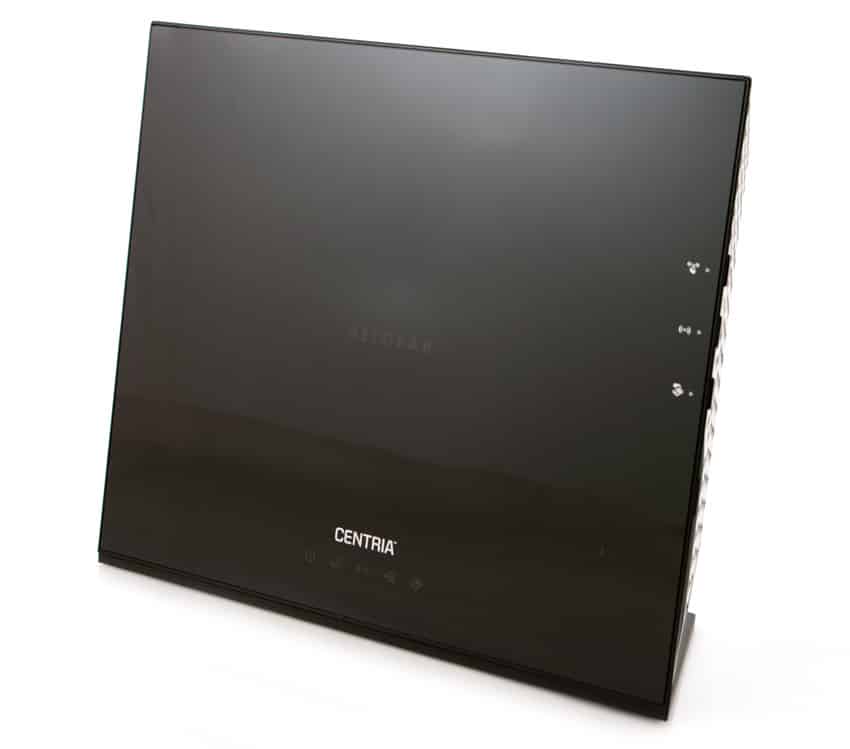
Just like corporate networks, homes and small offices must support a growing variety of devices which require wireless connectivity. The Centria provides high-bandwidth network access to these devices along with features designed to improve responsiveness and management for active environments where large file transfers, streaming media, and latency-sensitive applications like VoIP must coexist on the network without requiring professional administration.
Centria Specifications and Connectivity
- Dimensions: 256 x 206 x 85 mm
- Weight: 0.87 kg (1.91 lb)
- Five (5) 10/100/1000 (1 WAN and 4 LAN) Ethernet ports
- Two (2) USB 3.0 ports
- One (1) SD card slot
- IEEE 802.11 b/g/n 2.4 GHz
- IEEE 802.11 a/n 5.0 GHz
Design and Build
With dual band radios, space for an internal hard drive, and a number of wired interfaces on the chassis, the Centria is larger than most wireless routers. The integral stand gives adequate but not ample access to the ports on the rear of the Centria and gives the device an appearance similar to a blank digital photo frame at a distance. With a drive installed, the Centria is notably heavy than regular wireless router but quite stable. Netgear has released the Centria in two editions: the WNDR4720, which ships with a 2TB hard drive, and the WNDR4700, which ships bare, something that’s unique in the storage WiFi router space. Netgear provided us with a driverless device that we have fitted with a 2TB Seagate Barracuda hard drive for this review.
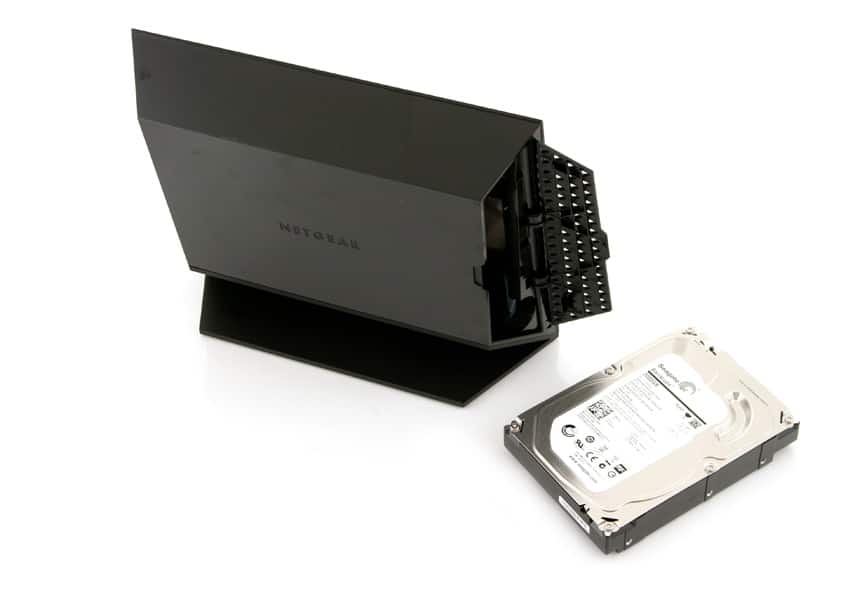
Installing the drive took less than a minute and required no tools. A hatch on the left side of the chassis lifts upward to reveal the internal drive bay. To install a SATA hard drive, slide the drive into position within the Centria and firmly press to mate the SATA connector. A plastic bar is then lowered to hold the drive in its installed position. The only evident drawback to this chassis design is a weak feeling from the drive hatch itself, however in a lifetime of regular device usage the hatch may only need to open once or twice.
Networking Features
Unlike other recent high-end Netgear SOHO wireless routers, Centria does not support the 802.11 ac standard, but does offer concurrent use of dual 450Mbps data transfers across the 2.4GHz and 5GHz frequency bands. Each of the four switched Ethernet ports and the Internet uplink at the rear of the router can auto-negotiate from 10 Megabit up to Gigabit speeds.
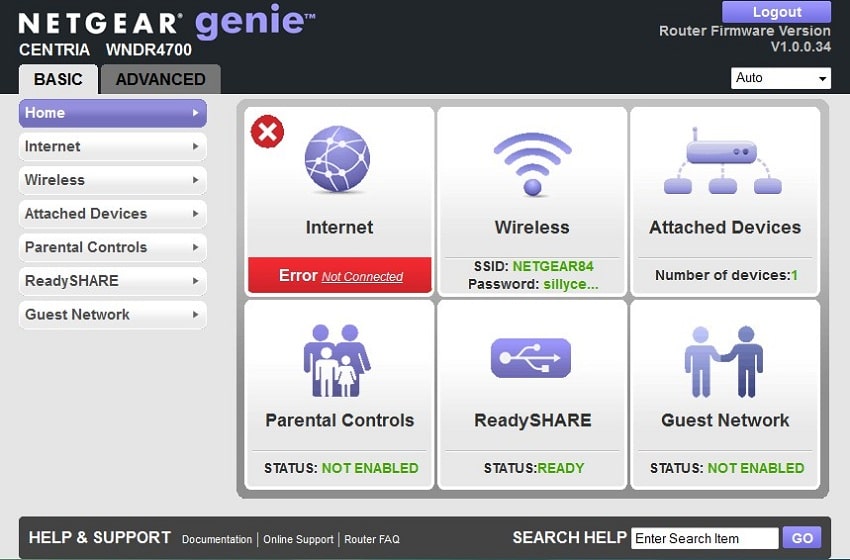
When first configuring the Centria via its web interface, the web GUI for Netgear’s Genie management software launches a guided process that ensures the router is configured for basic operation. In addition to the web interface, Genie is available as a desktop application and an App for Android and iOS devices. Genie’s Network Map feature produces a diagram of devices throughout the network. Its Traffic Meter function can disconnect the router from the Internet uplink based on a quotas configured by the user, for example to avoid incurring penalties for exceeding ISP bandwidth limits. Quality of Service (QoS) capabilities allow the user to prioritize certain types of network traffic, for example to improve the quality of streaming HD video, or to prioritize certain devices, for example a VoIP handset. Guest Network features simplify deploying an access-limited network.
The mobile Genie application adds the ability to stream digital media stored by the router to connected mobile devices. Unlike the Genie web interface, there is no straightforward method that allows the mobile application to connect to the router from outside the local network via the Internet however.
NAS Functions
The Centria’s primary selling point is its integrated NAS functionality. Unlike other Netgear routers which provide NAS capability in the form of external hard drives connected via USB, the Centria leverages Netgear’s NAS competencies to create a hybrid solution with higher storage performance than its predecessors on the router side.
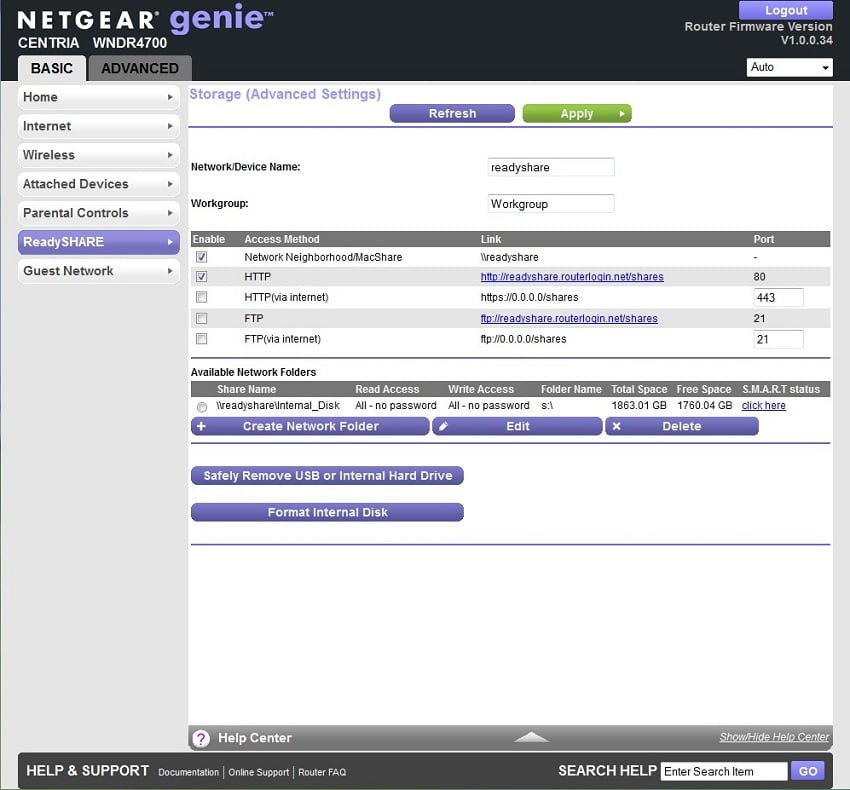
While the Centria can accept internal hard drives up to 4TB in size, it can only create storage volumes up to approximately 2TB in size (larger drives can be used with the Centria’s formatting utility but only 2TB will be available). Centria formats blank drives with a ext4 file system and also supports preformatted drives formatted in NTFS, FAT16, FAT32, EXT2, EXT3, Ext4, HFS+, and HFS+ Journal. For volumes larger than 2TB or for file systems other than ext4, the drive must be initialized with another device or PC before being installed in the Centria.
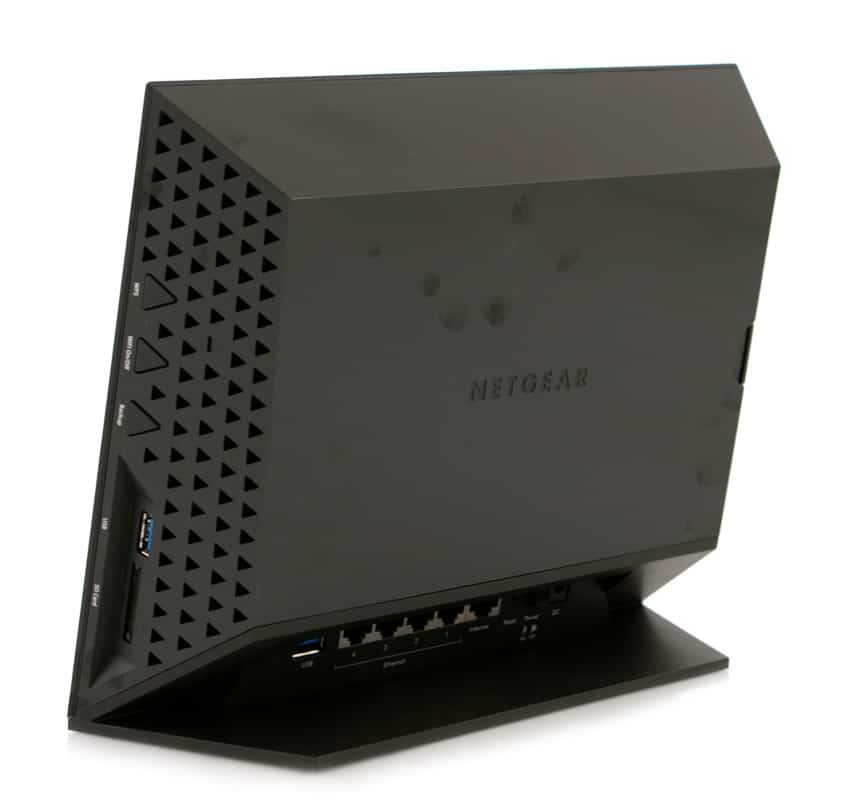
The Centria’s SD card reader can be used to add additional storage to the router, or to automate an SD backup workflow. For the latter, a button on the right of the chassis initiates a backup from the SD card to internal storage. In addition to internal and SD storage, the Centria can host two external hard drives formatted in NTFS or FAT32. Its USB ports are designed to support bus-powered drives and can also be configured for print serving. The router natively supports Mac and Windows file sharing protocols; upon initial configuration, network shares are also made available with full read and write access to help get the Centria online quickly. Once initialized, device administrators can restrict share access based on folder and user account.
Netgear provides its ReadySHARE Vault backup for Windows with the Centria in addition to supporting backup with Apple’s Time Machine software. ReadySHARE Cloud technology provides secure private access to files served by Centria remotely via any Internet-enabled device. Within the local network, Centria can stream media stored internally to DNLA-compliant media players including the Xbox 360 and PlayStation 3. Unfortunately, the user cannot control what media is available for streaming; the router scans its entire drive for content to make available on the network.
Performance
Using our consumer testing platform connected through a 1GbE port on the router, we measured transfer speeds with a 500MB IOMeter test file. Sequential performance measured 47.7MB/s read and 36.3MB/s write, while random 4K access measured 63 IOPS read and 74 IOPS write.
Conclusion
Converged router and NAS devices allow Netgear to bring together its competencies in both areas to bear. As the number of and diversity of network connected devices in the home and workplace continues to grow, Centria represents an approach to deploying an all-in-one network infrastructure that can handle a variety of devices and applications without requiring professional networking expertise to setup and configure.
While the Centria lacks polish in a few areas, such as support for the latest draft wireless protocols and the inability to connect via the mobile application when outside the local network, it represents a promising concept well executed in its first edition. Whether fulfilling the network, NAS, and print server needs of a small office or ensuring that personal data and family photos are automatically backed up and accessible through the web, the Centria has a compelling value proposition in today’s SOHO router market.
Pros
- Simple initial configuration
- Robust SOHO networking functionality
- App support on all major mobile platforms
Cons
- Arbitrarily limited to 2TB internal storage volumes
- Lack of mobile app access outside the local network
Bottom Line
Centria is Netgear’s first router to capitalize on the company’s experience designing NAS devices by incorporating its own internal storage. For homes and small offices looking to add shared storage and WiFi infrastructure, the Centria makes more sense and performs better than connecting an external hard drive to a router via USB.
Netgear Centria at Amazon.com



 Amazon
Amazon